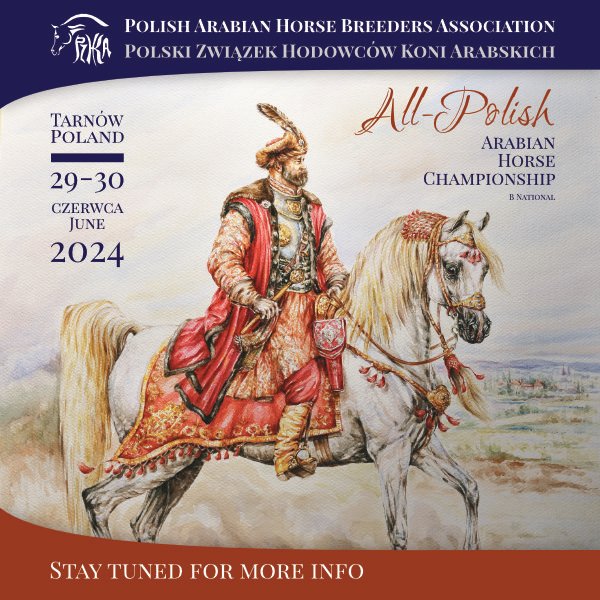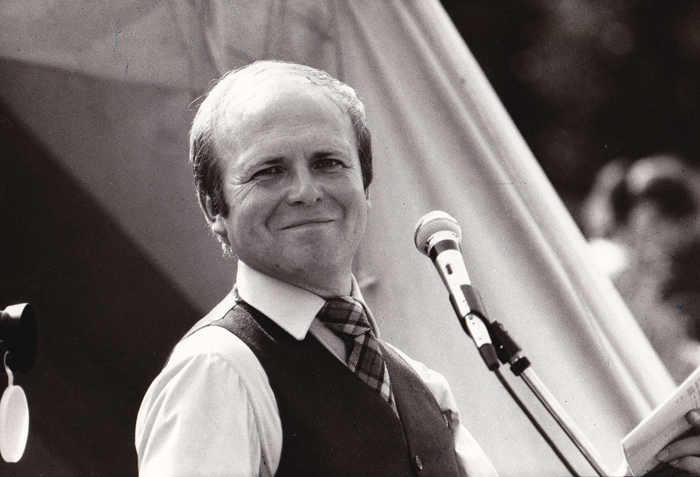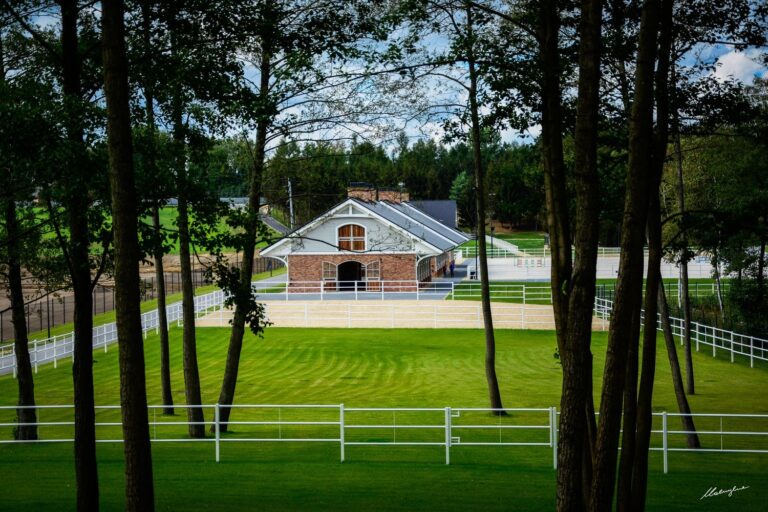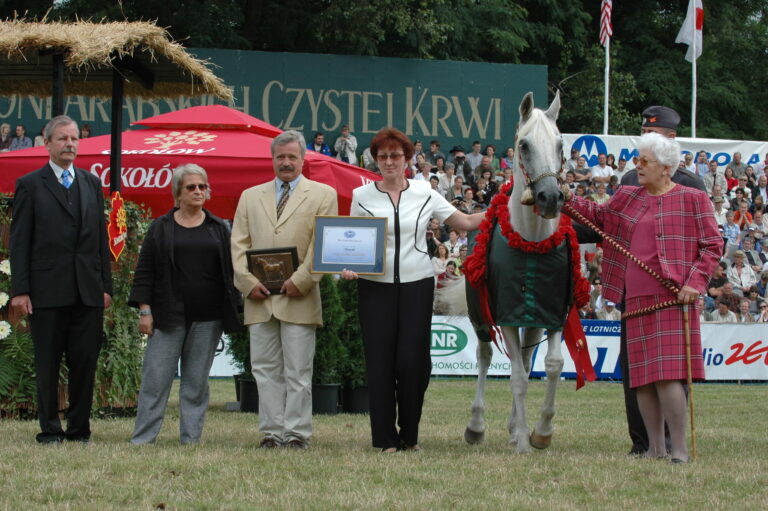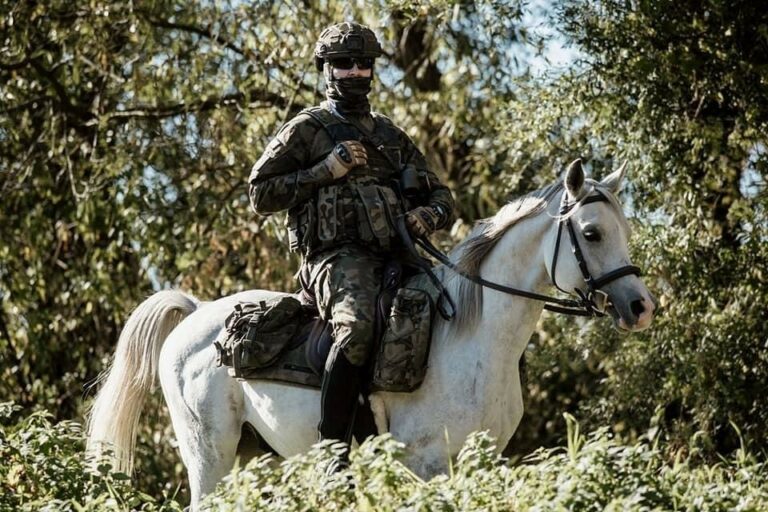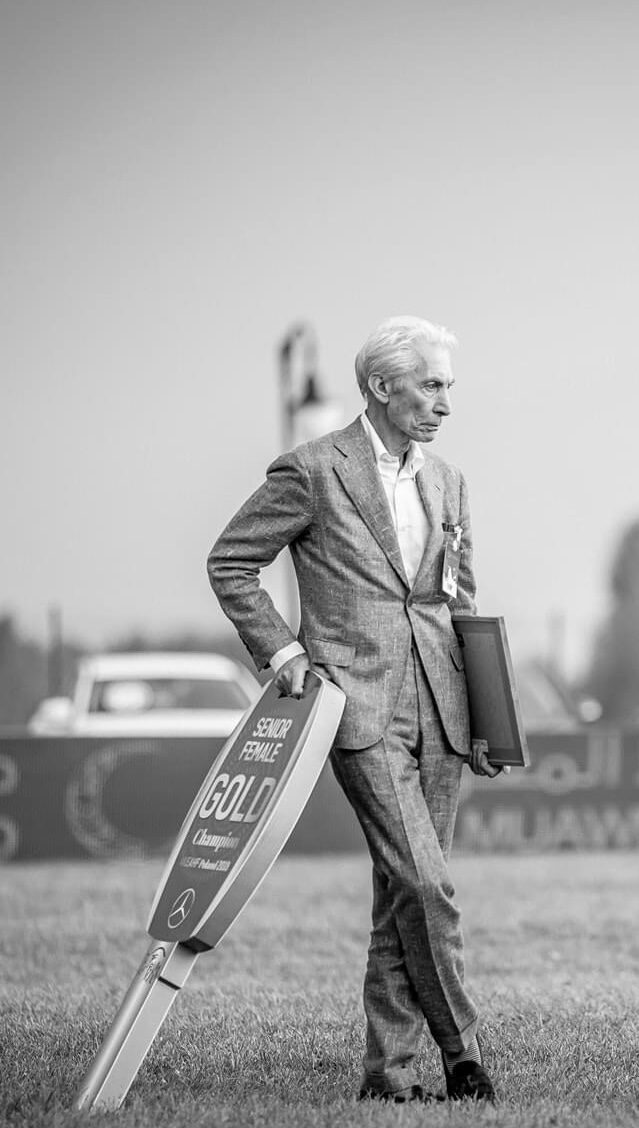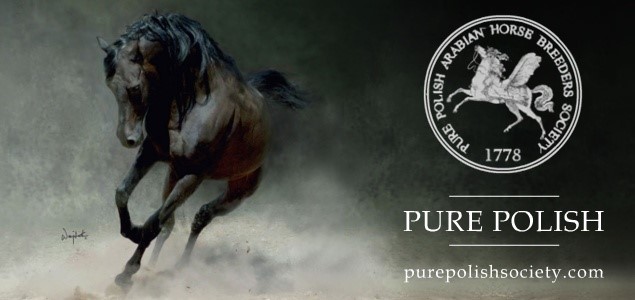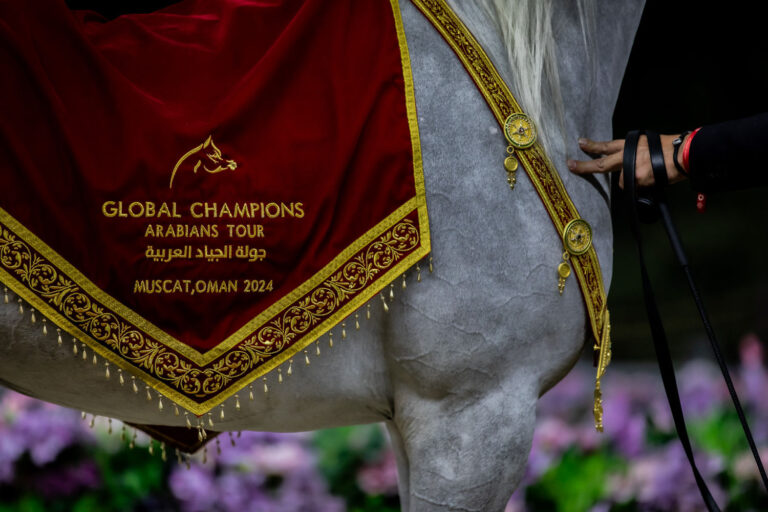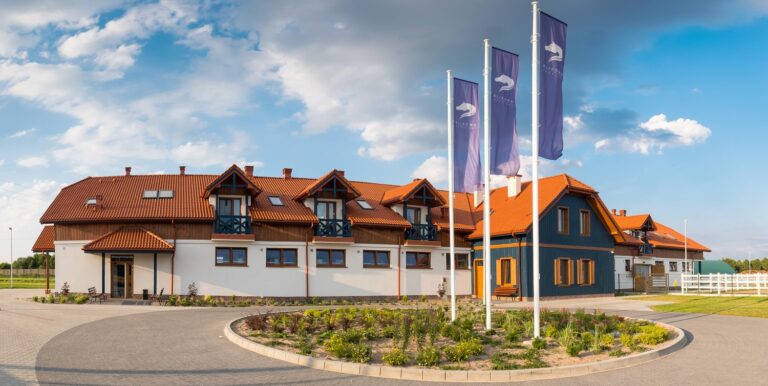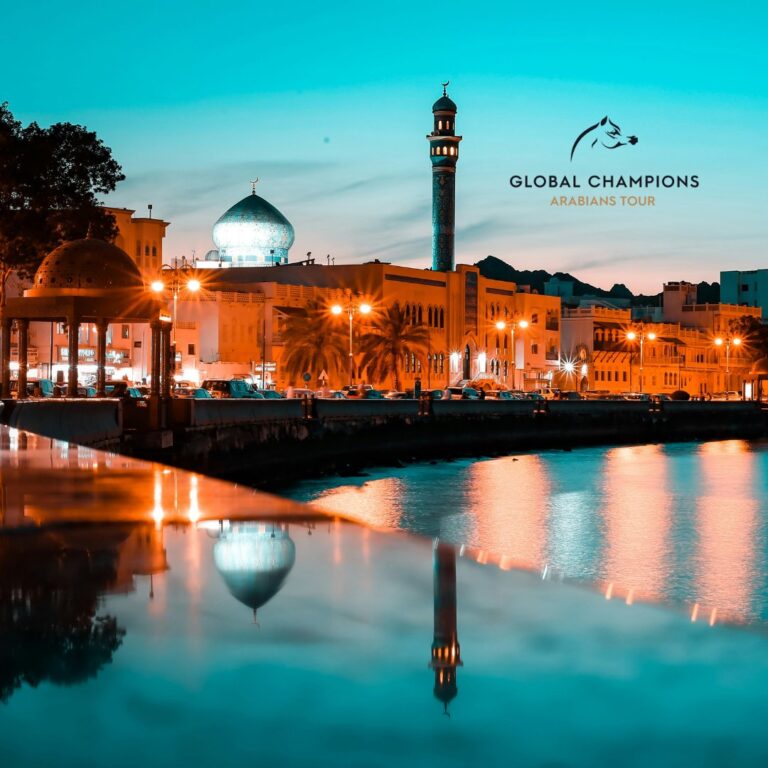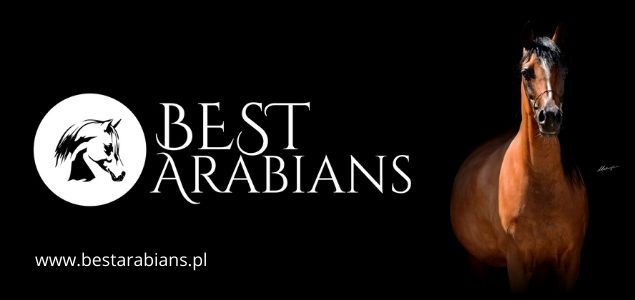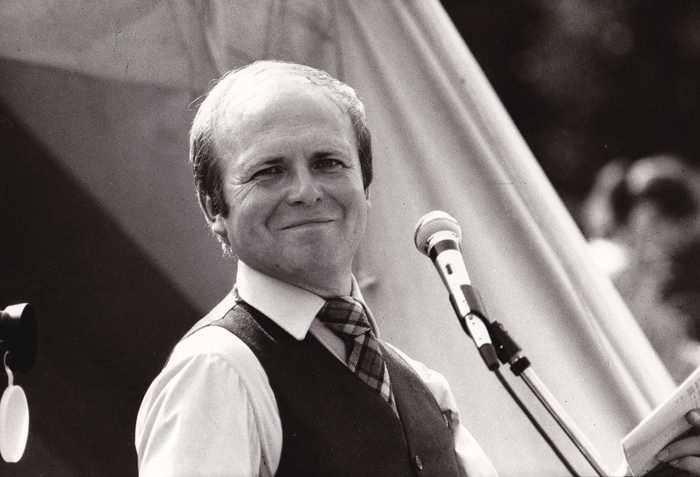
MAREK GRZYBOWSKI, the man who for 23 years organized and conducted the sale in Janów Podlaski – in those days held under the brand of Polish Prestige – tells us about the magic of the first auctions, the buyers from the 70s and 80s and the art of bidding. And also why the Arabian horse trade is called “a throat cutting business”.
Monika Luft: How did you find your way into the „Arabian” world?
Marek Grzybowski: My adventure with horses began during my university days. I wanted to ride horses, so I took a backpack and headed for Łąck [Stallion Depot] during my vacation, because it was the only place I knew of that had horses: I saw them once through a bus window when driving by on a school trip. However it turned out that only foreign tourists could ride at that given depot. Sending me away empty-handed, the director said that there was a state farm nearby where they accepted students. Immediately the first riding lessons were something that I really liked, so I thought: I will soon be a foreign trade graduate, I will be shifting some papers from left to right and here lies a different, colorful and more interesting world, full of fantastic people. So I searched for a job that would allow me to combine my new passion with my education. I was in luck – there was an opening in the horse department at Animex, the Polish Chamber of Foreign Trade, and I was hired. Without any favoritism! That was in April of 1972. One of my first tasks was to help during the June auction. That’s when I came in contact with Arabian horses for the first time. I met the great breeders, Andrzej Krzyształowicz, Ignacy Jaworowski – they were like Gods to me. There I saw the kind of Poland that always interested me: beautiful, noble, with a proud history… In 1974 I conducted my first sale.
M.L.: How was it back then?

M.G.: The first auctions took place without any promotion. Our breeders claimed that our horses were so good that they didn’t need any advertising. The auctions were attended by four or five clients, always the same ones, who purchased horses in Poland and later re-sold them at a great profit abroad. In 1976 I was responsible in Animex for the Arabian horse market, at the lowest possible position, as a regular employee of the breeding and sport horse department. I travelled at the time to the US and found myself at one of Mike Nichols’ auctions. I knew him well, because he was one of those few privileged buyers visiting Janów and other studs. Elkin and Elkana, sold to Nichols, won the titles of US National Champions. They were one of those horses that superbly continued to serve their role by promoting Polish breeding at various championships in the world. Elkana established a new sales record at Mike Nichols’ auctions – 185 thousand dollars.
M.L.: When was modern auctioneering introduced to Poland?
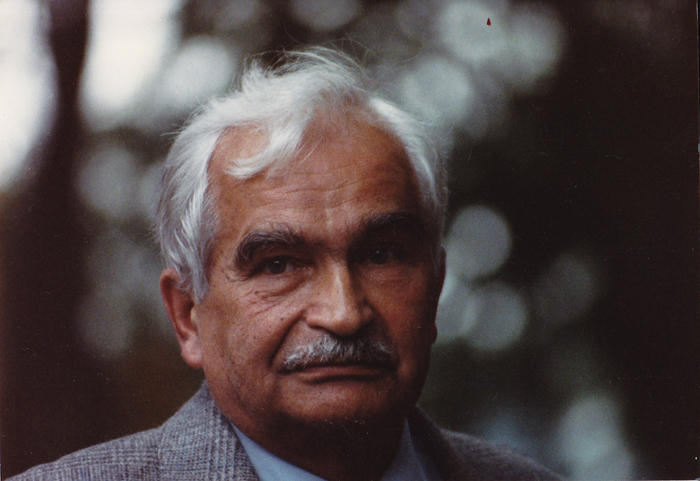
M.G.: When I returned from the US I thought that we should organize our auctions the same as it is done in the world. First of all I wanted to limit the direct selling of horses from the studs and instead to gather the entire breeding material for the auction. This concept was met with much reluctance, but was approved. A huge role in this was played by Adam Sosnowski, the head of the Breeding and Animal Trade Department in the Ministry of Agriculture. He was one of those that right after World War II, together with Andrzej Krzyształowicz, directed the operation of reclaiming Polish horses and created state breeding. As we know, due to the war the horses were dispersed all over Europe. I was very proud to be able to work surrounded by such personas.
M.L.: Were family traditions significant?
M.G.: No, although there was a sympathy towards horses in my family. My family comes from a very small town in the Podlasie region. My father was what we nowadays call a desk top publisher and worked in the Military Printing Plants as a civil employee. My mother was an accountant. I on the other hand dreamt about spending my vacation with horses. This dream came to me during a vacation in Bulgaria.
M.L.: What did the Arabian auctions become in your life?
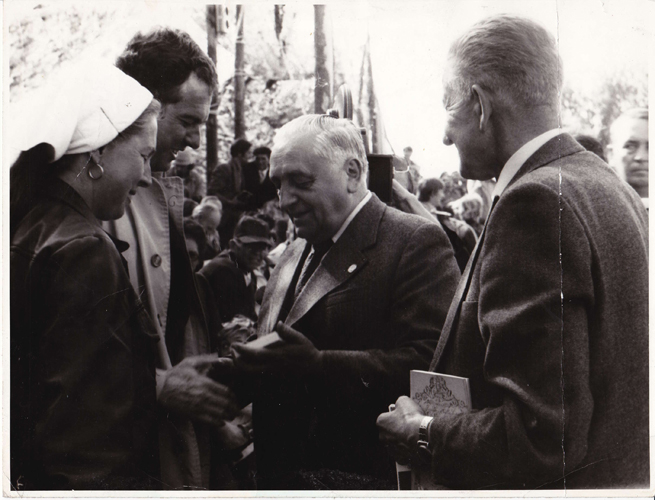
M.G.: A huge challenge. Poland was separated by an iron curtain from the world. I remember that when clients took photos of a stork landing on the meadow, the Soviet soldiers that stood watch on the other side of the Bug River suddenly became over-active. Two hours later our Border Guards arrived asking who took the pictures of the border and why. They even tore out the film from one of the clients’ cameras. Another time, when sightseeing, a client took a photo of a historical train station. Not long after the Security Service stormed into the hotel and interrogated everyone why we were photographing strategic facilities. Cheerless times, but beside that dullness, coarseness and poverty there was also a Poland worth showing.
M.L.: What was the magic of the first auctions about?

M.G.: They were completely different, more intimate, so to speak. They took place among several, maybe dozen people in a historical stable. The auctioneer stood on a tractor trailer, facing the clients. The entire village came to look at what was going on. And of course there was that Polish hospitality – picnics by the Bug, diligently “binoculared” by the Soviets, a welcoming shot of vodka, but most of all the horses, which were a revelation to those clients. Our horse, bred not only to be beautiful, but also to be correctly conformed, well-moving and with a racing career that was one of the criteria of horse evaluation, was totally new to them. What’s more, since the stud was a state stud, the clients were convinced that they were dealing with the Polish government – a communist one, but nevertheless a government. They came to buy from the government! So I thought up a sub-title to the sale’s name, “Horses of the State Studs”, to emphasize that fact, because I noticed that this was an important brand, distinguishing the Polish horse from all else. And finally – several decades of an unbroken breeding program and a special patronage of the state. A breeding board evaluating the horses formed an elite atmosphere around these horses and shrouded them in some unavailability. This was necessary to build our market.
M.L.: Who were the buyers from the 70s and 80s?
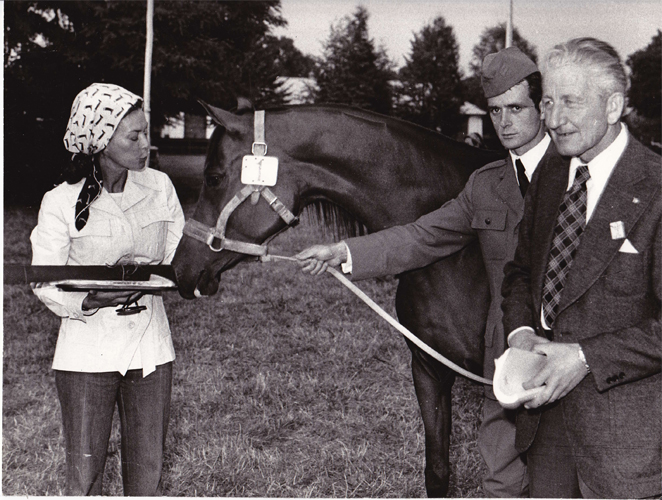
M.G.: In the 70s it was constantly the same clients, the same breeders – very interesting personas as a matter of fact, for instance Holger Ismer, dr. Eugene LaCroix, Patricia Lindsay. Patricia had a stud in England, but without any great luxuries – just like the English do in the countryside. She dressed in a way that made her blend in with the Polish crowd. She learned to speak Polish and loved Polish horses so much that she was willing to go to Janów by public transportation. She spoke mainly to the grooms, so her Polish language was very characteristic – she even had a slight Eastern accent. Dr. LaCroix was different, he spoke only in English. He was an excellent horse expert and knew how to promote these animals. He bought them here and resold them at a large profit. He purchased Bask straight from the racing track. Nabor was for several years an auction record price holder – 150 thousand dollars. That was what worried me – that we did not have access to the American market, that everything is happening via these couple of people. We wanted to reach the final client, the recipient, but there weren’t many Americans willing to travel behind the iron curtain. They didn’t know what to expect and what could happen to them.
In the 80s, after my visit to the US, the access to the market became wider. I began traveling there quite regularly, meeting with clients and encouraging them to visit us. And they, when they met someone who spoke English and who assured them that nothing bad will happen, began coming to Poland and the auction started to become civilized. The guests loved our cuisine and our Polish hospitality – especially that of Mr. and Mrs. Jaworowski. Mrs. Jaworowska was an excellent cook. People left Michałów well fed and full of good impressions. Mr. Jaworowski knew how to promote his horses. Director Krzyształowicz was more old-fashioned – it was enough that he himself knew which of his horses were the best. He was also very honest in his remarks – he would show a guest round the stables and tell him about the horses’ flaws. He had a very pre-war approach to horses. Before the war it was considered that a horse had to be of a small height, with a short, solid leg, whereas the head didn’t matter so much. The leg couldn’t be long,
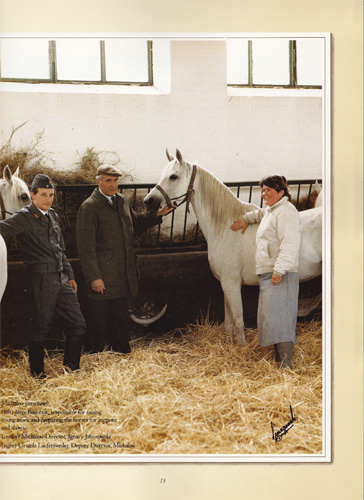
because then it would be weak, if it was weak, then it couldn’t cope with racing training, if a horse didn’t go through racing training then it wasn’t suitable for breeding. Jaworowski was the one who travelled more and therefore had a more modern approach to horses, which later resulted in Michałów’s show successes. The Michałów type of horse was more in the style of the foreign customer. However the genetic advantage of Janów Podlaski was very evident for a long time in the fact that most of the Polish stallions used in breeding were bred by Krzyształowicz.
M.L.: How should an auctioneer prepare himself for the auction? Should he know the clients? The horses? What comes in handy during bidding?
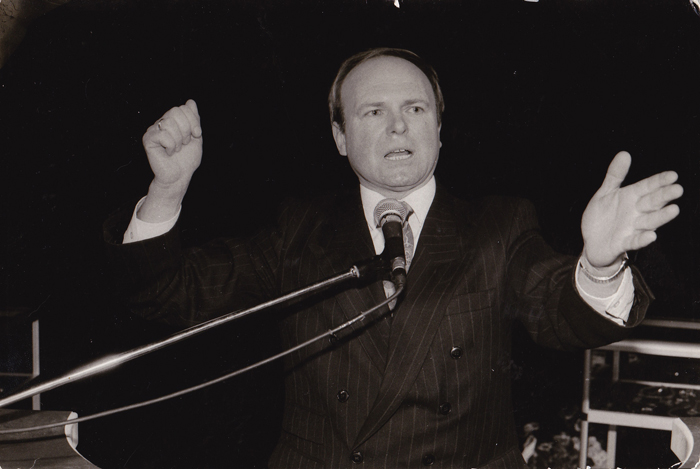
M.G.: The bidding was the final phase of all the work associated with organizing the auction. The market was created through inviting people. In order to invite them, you had to get to know them. In order to get to know them, you had to have a little courage to get close to them. I had many friends in the US and all over the world, I travelled a lot and was received sort of as a government emissary. Here was someone who represents the state studs, so it’s worth talking to him. Initially the trainers and agents – and this usually overlapped – didn’t treat me as competition, so they didn’t fight me down. I had access to clients, I knew those that came to the auction. I knew who needed what or how much they could spend. This proved very handy.
M.L.: How do you build the intensity of the auction?
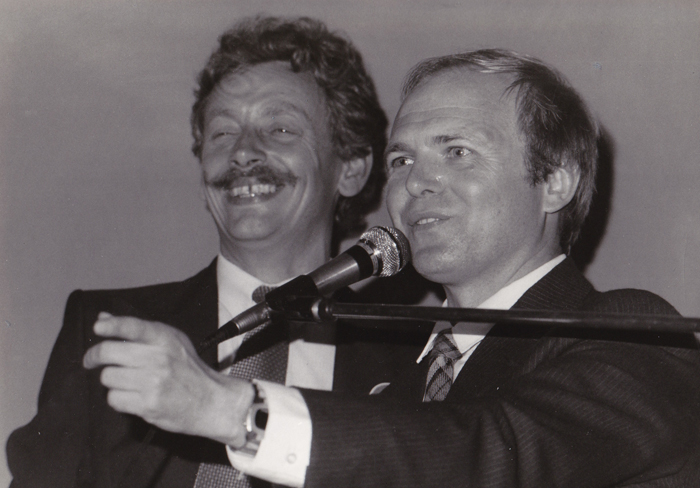
M.G.: The intensity is built both before and during the auction. First you need to construct a catalogue, which will be attractive enough to stir interest. Initially our catalogue was very coarse, but we soon hired great photographers and finally ended up inviting only American professionals, for whom we organized such a program as to give them the best opportunity to photograph the horses at their very finest. Later we had to make this catalogue available to the clients, at least a month before the sale. And still later we built the atmosphere by removing all obstacles that the clients could encounter, starting with guiding him through the VIP entrance at the airport, driving them to the hotel and ultimately to Janów Podlaski. We even launched an air bridge between Janów Podlaski and Warsaw – three helicopters transported clients to and fro, because driving every day for 2,5 hours each way was just too tiring. At the time there was no hotel in Janów where the guests could be accommodated. Next – a series of shows and the setting of the auction – a tent being an enclosed area, where the guests’ attention could be focused solely on the horses. In later years we gave up the tent, because the audience did not fit in it. We didn’t sell any tickets, admission was free – for us it was a pleasure and an honor that people wanted to see the event, cheer us on and stimulate the buyers with their emotions. For the Arab clients we had a prayer chamber at Janów Podlaski. Very good food, a chance to relax – all this was favorable for the auction’s atmosphere. After the sale we organized a trip across Poland, so that beside studs and fields the clients could also see some historical monuments, some Polish culture.
M.L.: In all press coverages of the auction from those years, regardless of the author, there is nothing but compliments under your address. There are many “great, dynamic”, “very expressive”, bidding conducted “at breathtaking speed”. After the sale of Druid the media wrote about a “fiery speech” and “charming the clients”. “A master of his trade”, “an American way of selling” – how did you learn it all?
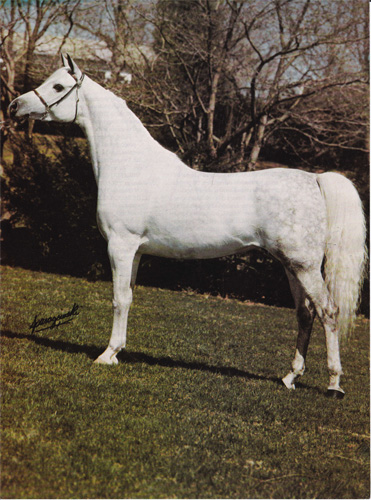
M.G.: I borrowed ideas from Mike Nichols’ auctions, but I’m considered to be a man of few words, so I’m not really sure how I was able to acquire this ability. Perhaps part of it had to do with the fact that those were very lucky years for Polish breeding, because Poland, after the Solidarity period, stirred a great interest in general. And also in us, Poles, the festival of Solidarity released new doses of optimism and energy. We began to smile at each other more and that translated to this here atmosphere. But I conducted auctions since 1974. With weak knees I sold several horses. Later, with each year, I was better and better. The reaction of the public gives you wings. When I conduct an auction monologue, rolling out the prices, I suddenly stop – and then a silence falls, which is a moment when everyone wonders what will happen. The public is silent, the clients are silent. This lasts several seconds, though it feels like eternity. After that comes a bid increment of, say, 50 thousand dollars. And then the audience explodes with applause. It is a kind of art. Though I am a bit distracted in life, during bidding I can focus so much that I notice the buyers’ every movement. Someone bids by raising their hand, someone else by nodding their head, someone by closing their eyes. Of course this is easier with just tens of buyers and gets harder if the number exceeds a hundred. But I know where the clients are sitting and I know what they are interested in, because I have talked to them earlier. This helps. A lot depends on the spotters, who I have trained. They created an additional atmosphere by outshouting one another. That’s what it’s all about. My wife laughs that ever since my auctions came to an end, I have nothing to say.
M.L.: Did the past auctions have their dark sides?
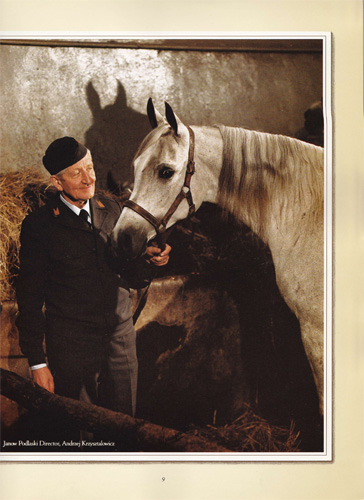
M.G.: There were threats. One such moment was Chernobyl (1986). A rumor was spread that the entire territory of Poland is contaminated and that horses will be ill or have defects. We were worried that the clients would be afraid to come. That’s when we gave a guarantee, a thing unheard of at auctions, that if a foal would be born with any defects, we would give a free breeding or that we would financially compensate the client’s losses. And the clients came. Other worries were caused by tough competition. The American trainers began seeing us as rivals. There was a sort of rivalry going on the entire time between pure Polish horses and Straight Egyptian. The “Egyptians” tried to find gaps in the pedigrees of Polish horses, claiming that no one knows where they came from. At the time there was a discussion at a WAHO conference about what is and what isn’t an Arabian. James Stream, a long time president of WAHO, cut this discussion short and said that all Arabians registered in the stud books are Arabians. That was a right decision, because every breeding starts somewhere. And in Poland there were additionally many bloody experiences, wars, during which part of the animals were lost, then they were found and were recognized basing on the brandings and descriptions. That was the situation after September 1939, when the Janów stud was dispersed and Krzyształowicz and Sosnowski identified the found specimens. One such anecdote tells about a mare they called Ofirka, because they found in her the characteristic traits of Ofir. There were no papers for this, it was only later that her pedigree was reconstructed. The stud books were not lost, the problem was to match the pedigrees to particular horses that were found. When mentioning our worries at the time I must also say that the tendencies that determined the current shape of Arabian horse breeding began in the US in the early 80s. This was mainly the building of large studs, using insemination and embryo transfer on a broad scale. All those techniques which were not available in Poland yet. They worried us, because here breeding was still an old-time art basing on tradition, knowledge, a breeding system existing for centuries. Whereas there was a threat in the US that the breeding would become a mass production. We were worried about the over production of Arabian horses and a huge fall of prices. And that happened soon.
M.L.: You have been a witness of historic moments, when the history of both horses and our country intertwined.
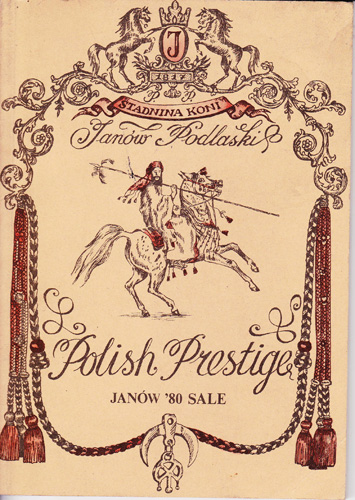
M.G.: Quite memorable was 1980 – fantastic, though we were worried about the pacification of the strikes. Agreements were reached between the government and the strikers on August 30th. When I announced this before the sale the public and clients went wild with happiness. We once tried to get Mike Nichols to do a film depicting these intertwined fates of people and horses, but he didn’t seem to think he could “sell “ this subject in the US. But Polish Arabian horses, owned by Ventura Farms, starred in the soap opera “Dynasty”. David Murdock, owner of the stud, purchased Bandos and many of his daughters. The soap opera’s main heroine, Krystle, at one time travelled to Warsaw to negotiate the purchase of horses with the government – which would be me.
M.L.: Did the martial law of December 1981 have any influence on the popularity of the auction?
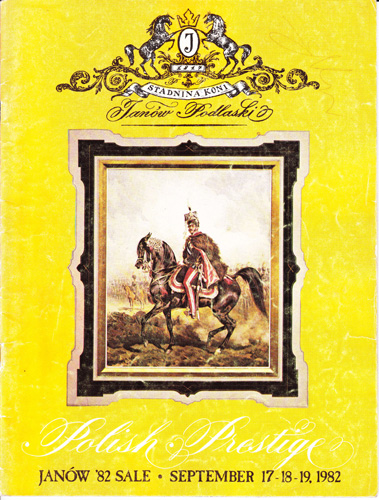
M.G.: The clients came, because they knew us and therefore didn’t feel especially worried. The auction during the martial law was strange because I was called for military service. Like many other small activists of Solidarity – I was the vice president of the trade union in Animex – I was taken for three months to the army as a temporary officer. And we sat in tents on the training grounds… Animex tried to pull me out, but they released me only for the auction itself. I came shaved, with a bald head.
M.L.: Which bidding is one you remember most?

M.G.: The biddings that I remember most are not those that brought the highest prices – for example Bandos, 826 thousand – but those which were a surprise. The mare Fuga in 1988 was priced very low. When setting the prices someone said: what a vulgar mare, with a head like a bucket, not more than 7 thousand dollars. But she walked out onto the stage and I immediately felt that the audience liked her. The music, the lights, the applause – all this caused her to become more beautiful with each moment. I began the bidding with 30 thousand dollars. I thought that the public’s interest is worth at least such a start. The bidding soared quickly, 40, 50, 60 thousand dollars. The public applauded and the mare bloomed, her veins showed through her thin, sweaty skin, she snorted on stage and presented high leg action during movement. The bidding exceeded 70 thousand dollars – 71, 72, 73, 74 – we finally sold her for 77 thousand. I then thought that an Arabian horse has fantastic blood, that can reveal its beauty, even hidden, when need be.
M.L.: The most ill-fated auction?
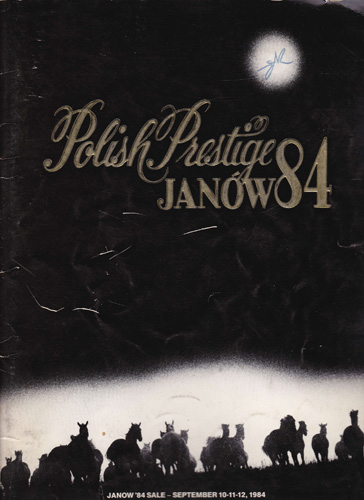
M.G.: In 1984 the promotional department of Animex designed a black cover for the catalogue – I didn’t like it, but agreed to use it as not to sabotage our cooperation. And Michałów’s horse trailer fell over on their way to Janów. Two horses were withdrawn from the sale. But the worst was that that year a correspondent of the United International Press was killed on the road to Janów in a car accident.
M.L.: The media at the time showed excitement over such guests as Armand Hammer – „a friend of Lenin” – an American oil tycoon from Odessa.
M.G.: Armand Hammer’s arrival in 1981 caused some political pressure on us, because he was not only wealthy, but had friends in the Soviet Union. He intended to buy El Paso and was counting on this being made easy. The stallion was already well known. He had already managed to claim the titles of US Champion and the nickname of “The horse that money couldn’t buy”, because his breeders had numerous times declined to sell him, using him broadly in Polish breeding. When Hammer appeared in Poland, the horse was already designated for sale – he had left a suitable number of daughters. Seated at a large table were breeders and representatives of the Animal Trade Association, but almost no one spoke English. Just as well, because thanks to this I could peacefully carry out the negotiations. They were quite long,
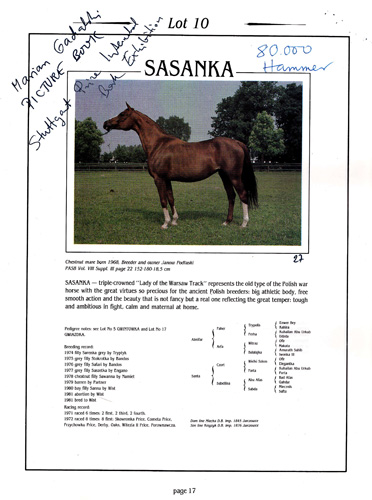
because we didn’t want to give in too quickly. Suddenly Hammer said: I’ll give half a million dollars for the horse! Everyone’s eyes became round and I could see that they wanted to agree, but I said: wait a minute, we won’t accept half a million, but we can think about it for a million. Hammer hit the table with his hand and shouted: sold! And I thought: darn it, I put in a too low bid. And added: under one condition. Tomorrow is the sale and you must buy at least five mares. He paid 380 thousand dollars for those mares, but I still had the impression that if I said “a million and a half”, he would also have agreed.
M.L.: Considering the price of the dollar on the black market, those sums were unbelievable.
M.G.: Those large sums went through my mouth, but they did not impress me at all.
M.L.: How was the auction financed?
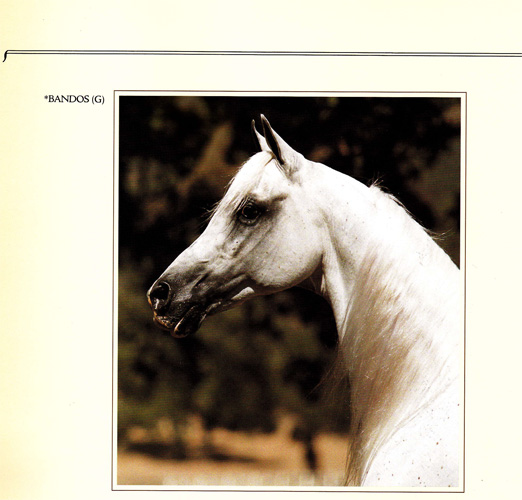
M.G.: At first all the costs were covered by Animex. In the early 90s privatizations were begun. There was also a lot of talk about the privatization of Animex. That’s when I began shifting things to make the auction pay for itself, at least partially. We searched for sponsors, sold VIP cards for small prices in order to have a reimbursement of costs. We managed to do this – the more politicians and media were interested in us, the more sponsors. The more sponsors, the better the setting and more people wanting to show themselves there. My last auctions – 1999, 2000 – paid for themselves, meaning that the cost of the organization and promotion were covered by sponsorship money.
M.L.: In those times you were already doing your “own thing”.

M.G.: I left Animex with the entire team in 1992. We established a company under the name of Polish Prestige with the aim of organizing the auction at one point in the future. For several years Animex organized the sale without our participation and the aggregate began to decline greatly. In 1995 the sale outcome was only 370 thousand dollars. That’s when the breeders protested and demanded Grzybowski back. In 1996 we signed an agreement with the studs for the organizing of the sale. We didn’t have a lot of time, because the agreement was signed in March, but we knew how to do it and we had friends in the world. The agreement contained 10 points and filled one page. Already during the first auction we doubled the aggregate. Each next year was better and better. The costs of the auction were divided according to the profits. The stud that made the most money took on the majority of the costs. We worked for a commission, which amounted to 11% and participated in 11% of the costs. This was pretty fair and no one had any resentments. But we had to give up the tent. The auctions began taking place in the same spot as the National Show, on grass, under clear skies. There were two years when we were soaked wet.
M.L.: Your parting with Animex was rather turbulent?
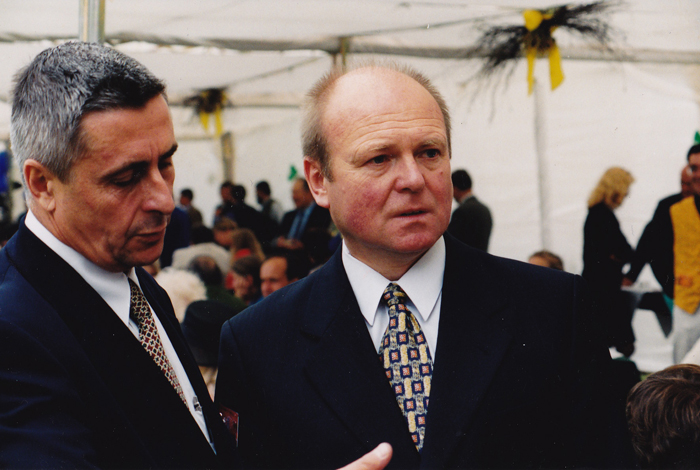
M.G.: I tried to persuade the management to exclude the Horse Department from being privatized. I was the head of that department since the Solidarity period, after which I was quickly promoted because I was suddenly politically correct. But that didn’t happen and I established the company “Polish Prestige”, giving it the name of the Janów auction. I figured that I have the moral right to do so, because the name was my idea. I was also afraid that after my leave someone might go on to usurp that name. Until this day it is a recognizable brand. There was later a dispute about the rights to the name, but in the end we signed an agreement. However as a result of my departure part of the promotional materials were left in Animex. A film was found many years later, made by the American team of Arabian Horse Video Magazine, with my participation as a co-author and co-producer. I almost forgot that such a film ever existed! Many promotional campaigns were done together with our American friends. There was a good film created before the Polish Ovation Sale, which has been lost in Poland. It was shown once in Polish television, but there is no trace of this copy today.
M.L.: Why do you call this the „throat cutting business”?
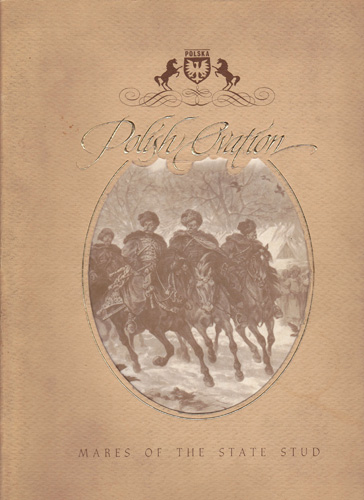
M.G.: It is a term which appeared in the US in the mid-80s. It meant that in the Arabian horse trade there are no sentiments, that you have to be prepared to face tough competition. No holds barred to claim a client and to sink your rivals. We must remember that the breeding of Arabian horses is one of the most difficult types of breeding, because almost everything that is being bred finds its way onto the market. Breeders are constantly looking for new markets of potential clients. The world market is controlled mainly by agents and trainers-handlers, who are intensively looking for people that might be interested in investing in Arabian horses. However in this business there is a smaller growth of wealthy people than the growth of Arabian livestock. Therefore the competition forces you to have more initiative and impudence. Every new face is immediately surrounded by a crowd of agents, like piranhas, who try to pull that new person in their direction, pushing everyone else away. Part of this business is aggressive promotion and ruthless, brutal measures.
M.L.: Did you ever dream of breeding horses yourself, or to have at least one or two mares?
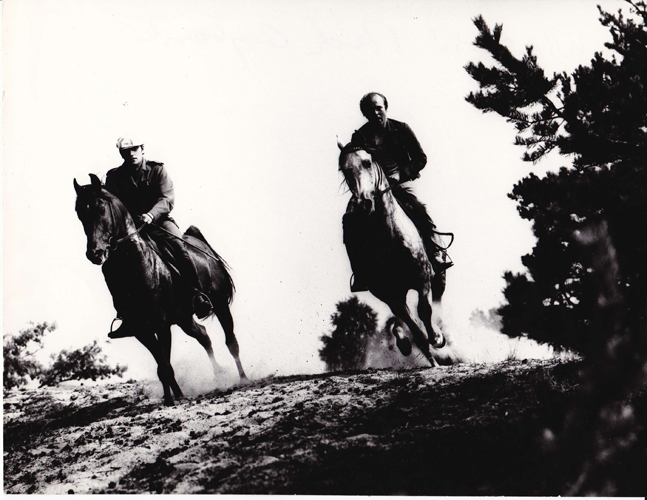
M.G.: I had a dream once, that a van packed with horses came to my house and unloaded four of them into my little backyard. I was terrified thinking of how I would feed them and what they would be doing there. Luckily, it was only a dream…
There was always this possibility that the organizer of the auction became an owner of a horse if a sold horse should return from abroad. The stud could theoretically not accept it and I was the one responsible for the sale. Once actress Stefanie Powers was talked into buying a horse by one of the Animex directors. And she came to the sale, bought a horse and then didn’t know what to do with it. She didn’t collect the mare for a long time and the stud also didn’t want to take the mare back. We finally convinced the breeder to put the mare back to the herd. So she stayed home with a note in her biography that for a moment she belonged to a film star.
Polskiearaby.com You Tube channel: Watch invaluable archive footage from 1985! Footage that was deemed to have been lost and has been found. Four priceless videos document Polish Arabian horse breeding of that time, Polish Nationals and the Polish Prestige Sale. Commentary: Marek Grzybowski


